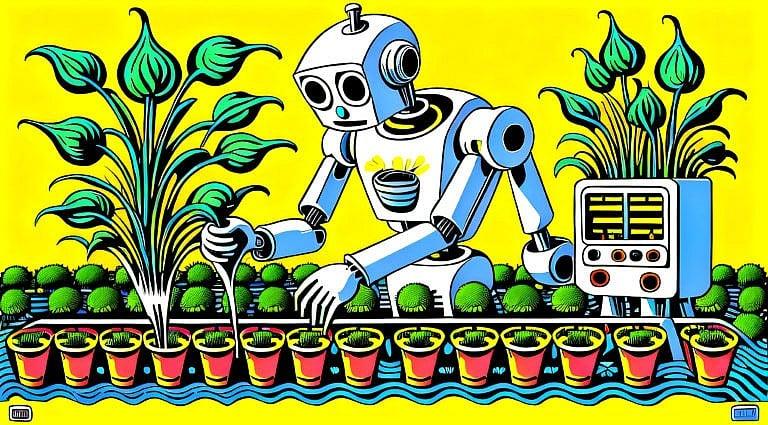Machines will make our food tastier and healthier
AI algorithms can reduce food waste, add more nutrition and solve some of our restaurant-staffing woes

Share
Nestor Gomez is the chief technology officer at the Canadian Food Innovation Network.

For the past decade, farmers and grocers have already been using AI’s predictive and analytical prowess to figure out what and how we eat. For example, Canada generates some 35.54-million metric tonnes of food waste each year, and this technology can help businesses reduce how much food they throw away. In one application, past consumer demand data is fed into a predictive model, which will tell a company how much food they should produce in the future—like the food-industry version of a weather app. Going forward, we’ll be able to fine-tune these demand forecasts by determining the important factors—how much to produce, who the likely buyers are, when people will consume these goods and why they are being consumed.
It’s astonishing to step into modernized food factories and see streamlined conveyor belts powered by AI and sensors, which work together to maintain quality assurance. Savormetrics is one Canadian company that has the technology to provide real-time biophysical and biochemical quality analysis. Take a conveyor belt full of potatoes: Savormetrics’ AI biophysical and biometric algorithms and sensors detect the presence of certain gases correlated with rotting food or fertilizers and pesticides. A potato might look fine to the human eye, but AI can identify when it is rotten inside. Once that’s determined, it’s pushed to a separate conveyor belt. Rather than throwing away the entire batch of potatoes or halting production to search for other contaminated items, this analysis and detection happens in real time, preventing food waste and avoiding recalls.
The marriage of biosensors with AI has also cropped up in companies like Aromyx, which uses AI to replicate the senses of taste and smell. Its version of an artificial nose and taste buds can be trained on individual users’ affinities. Retailers can now recommend food, drinks and perfumes that match consumers’ preferences.
For all of AI’s capabilities, its impact will be directed by those who train it. We need regulations to guide innovation toward technology that will better people’s lives. One such potential application is in the area of nutrition. Industrial agricultural practices often lead to soil erosion because the soil isn’t given sufficient time to regenerate and become richer in minerals and nutrients. As a result, much of our food doesn’t have the nutritious value it should.
AI can optimize soil properties and plants’ resilience and resistance to pests or diseases. Once we improve the crops we harvest, AI and machine learning can detect any missing nutrients. For instance, AI, along with machine learning algorithms and biosensors, could detect if a batch of strawberries is short in potassium or vitamin C before it’s used to make jelly. We already have access to those nutrients, so once AI systems flag the deficiency, we can easily add them to complement what nature produced.
AI developments can also help fix hiccups in the food service industry. Gastronomous is an Ontario-based startup that created the world’s first fully autonomous kitchen. It builds smart commercial kitchens for restaurants, using automation, interconnected robotics and AI software to solve food-service problems like profitability, waste disposal and the labour shortage (in 2022, 95 per cent of restaurants faced staffing challenges).
Down the line, dining out could be more automated than ever before. We may see more restaurants using automated kitchens to do repetitive tasks like food prep and dishwashing, reducing food-safety risks and helping to take the pressure off overtaxed workers. But real people will still need to be on staff. Food service and gastronomy is as much an art as it is science, and we can’t replace the creative storytelling element of food with technology—at least not with our current AI capabilities.
AI’s next big challenge in the food industry—in all industries, actually—will be integration. There are so many startups and small-scale AI solutions cropping up, but we need our technological innovations to function together. ChatGPT is already working on it. Its premium subscription now allows users to use add-ons like Instacart, so if you ask ChatGPT for a pasta recipe, it will provide the instructions and create a shopping list of ingredients, which can be automatically added to the Instacart app. The deeper AI integrates into our existing technological landscape, the more it will become a crucial part of our food landscape.
We reached out to Canada’s top AI thinkers in fields like ethics, health and computer science and asked them to predict where AI will take us in the coming years, for better or worse. The results may sound like science fiction—but they’re coming at you sooner than you think. To stay ahead of it all, read the other essays that make up our AI cover story, which was published in the November 2023 issue of Maclean’s. Subscribe now.